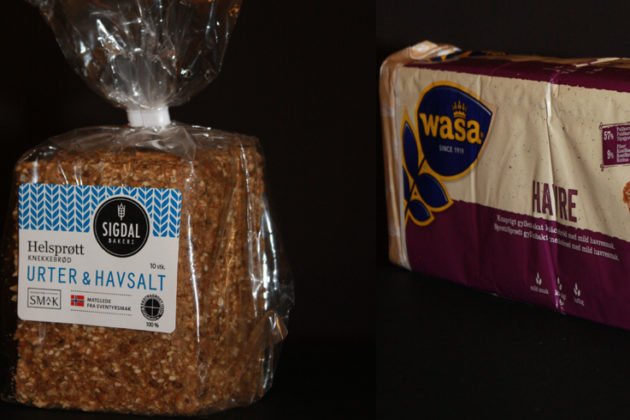Crispbread – a Norwegian (export) success

In two years the Norwegian export of crispbread has more than trebled, from less than 20 million NOK in 2014 to approx. 65 million NOK in 2016. A further doubling is expected in 2017.
Senior research fellow Sveinung Grimsby with Nofima studies innovation in the Norwegian cereal industry and is looking into the background of this success, among other things.
Sales of Norwegian crispbread have increased significantly in Norway too, and it is the more lavish, exclusive varieties that have experienced increased demand. The added value for this type of crispbread is higher than for ordinary crispbread. While the value in Norwegian crispbread sales has doubled, volume has only increased by a half.
“Increased willingness to pay for a product and export of a Norwegian agricultural product are good indicators of innovation,” says Sveinung Grimsby.
Prior to 2012 there were almost no Norwegian crispbreads in shops
It is interesting to see what is behind this success. There may be several reasons, but it is worth noting that before 2012 there was no production of crispbread on an industrial scale in Norway. Certain craft bakeries sold varieties of the new type of crispbread, and there lots of discussions in social media concerning private recipes, also back in 2011.
2011 was also the year the project Open Innovation Cereal was concluded. The purpose of the project was to bring forth new insights, new ideas and to explore the industry’s opportunities. 17 ideas were presented to the industry. One of them was crispy bread – a luxurious variant of crispbread.
Now, six years after the results were shared, we see that several of the ideas have become product categories, among which crispbread is by far the largest. “Todays 3000 tons of Norwegian produced crisp bread does make a significant impact for the food industry and its export of agriculture products.”
What is required to succeed with open innovation?
“I have looked into whether there are any patterns for how businesses develop new products and services. Whether there is any link between success and how open and interaction-oriented businesses are in their innovation processes,” Sveinung Grimsby says.
Grimsby’s research shows that the businesses interact and are more open in practice that they often are aware of themselves, and this is good for innovation. There are nevertheless certain factors that must be present in order for the businesses to open up.
The companies must have mutual trust in each other, and they should be roughly the same size. It is also major benefit if they don’t compete for the same customers.
Healthy crispbread that doesn’t crumble
Another discovery from the research is that the closer the businesses approach launching new products or business models, the more closed innovation becomes. This is natural, because an important goal of innovation is to achieve competitive advantages, and with products that are relatively easy to copy, it’s important to get a head start.
Insights on crispbread, which the entire industry had access to in 2012, were that crispbread is not eaten in the car because crumbs in the seat are uncomfortable, and that an increased focus on health can give crispbread an advantage as a snack. Based on this, several manufacturers have succeeded in making crispbread that doesn’t crumble and that is a healthy, tasty option in the snack category.
“The lesson is that one achieves better innovation through transparency and interaction, and it will be important for the entire food industry to learn how they can organize innovation more effectively in the future,” Sveinung Grimsby concludes.
Facts about Open innovation in the Norwegian cereal industry
The project, which ran from 2010 – 2011, was funded by the Foundation for Research Levy on Agricultural Products.
Participants were from the entire grain value chain and the authorities. Nofima headed the project.
Contact person
Research areas
Innovation research
Topics
Cereals
